Main Menu
Entry Barriers: A Historic Battle for Women’s Equality

Gina has always been stubborn and bold, so when it came to advocating for women’s rights and equality in the outdoors, she was bound to make changes. As the founder of Trail Sisters, Gina’s goal is to grow participation and opportunity in women’s trail running. Gina is also Mayor Pro Tem for the town of Buena Vista, Colorado, an active member and former Training Director of Chaffee County Search & Rescue, and Race Director for the Lake Sonoma 50 Mile, Marathon, and Trail Sisters Half Marathon.
Share This Article!
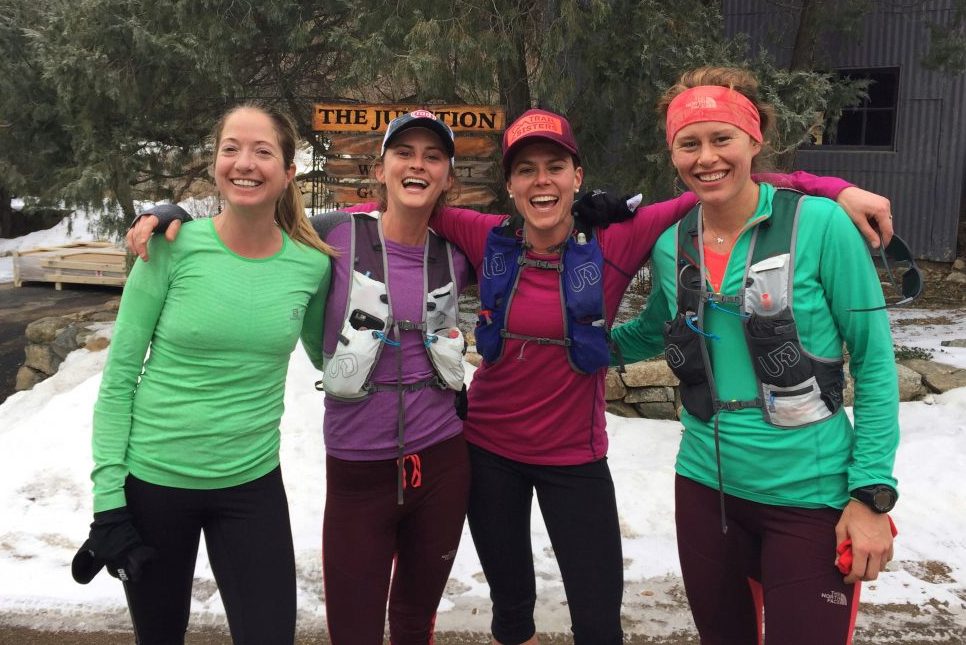

Every time I start typing this article I get hung up with the intro, I want to focus on addressing the entry barriers preventing women from exploring the outdoors, but I can’t seem to get there unless I include issues with inequality, and the history of our society.
You see, it’s all related. We need to understand where we started, why stereotypes are the way they are and the advances we’ve made. Without that knowledge, it makes our mission for change that much harder.
Sure, this might sound like the start to a women’s lib article, and yeah, it might be, but the way our society thinks and acts directly relates to how we perceive, organize and approach sport (and everything else for that matter).
So let’s start with a brief timeline of advances for women within US history.
*For the sake of time and article length, I tried to choose landmark advances.
1900 – All US States finally allow married women to keep their work wages and are also granted the right to own property in their names. Prior, wages were given to husbands and all property was in the husband’s name.
1920 – The Nineteenth Amendment is ratified. Women now have the Constitutional right to vote. This was a big win for women, as they could now vote for the people representing them, and what those people stood for.

1963 – Congress passes the Equal Pay Act. This act is meant to enforce equal wages for the same work no matter color, religion, race, national origin or sex.
1964 – Civil Rights Act – Title VII is passed. This act prohibits discrimination in employment based on a person’s sex.
1972 – Title IX is created! This prohibits sex discrimination in all education programs that receive federal funding. Women now have more opportunity to play sports!
1973 – Roe v. Wade ruling. Supreme Court rules abortion is now legal.
1978 – Pregnancy Discrimination Act. This act ends discrimination against pregnant women applying for employment.
2013 – Women are granted the right to take military combat positions. The Pentagon’s 1994 restriction is removed.
Now that we have a better grasp on the battles women have been fighting for, and when there was change, we can understand the mindsets and expectations that society has placed on women.
As you can tell the issue of equality has been a hot topic since as long as anyone can remember. It’s 2018, and we are still marching and demanding for rights that should be inherent with being human, never depending on your gender, sexuality, race or religion .
Unfortunately, the sought out equal treatment of every human and the disposal of discrimination, is something that cannot be resolved until all members of society get on the same page. The pollution that results from negative mindsets and out dated societal expectations has created the barriers we experience today.
Shifting focus back to women in trail running specifically, I’ll break down the major obstacles that women encounter while trying to gain entry.
* I compiled this information through numerous one-on-one conversations, 30 female focus groups throughout the USA, Canada and China, and demographic research. Do note these barriers don’t affect every woman, and that some are also barriers for men.
Motherhood
Historically and instinctually, women play the primary role in care giving to children. Anyone with a kiddo, or puppy for that matter, can relate to all the time and care a little one requires. Additionally, because of the historical trend of playing primary care giver, mothers often feel guilty if they aren’t spending time nurturing their children. Some mothers are even shamed for not putting 100% of their free time into their family.

Besides caring for the children, women also have the issue of shape shifting. For some, they are able to bounce back to their previous running form not long after pregnancy. Other women may struggle to regain their running bodies because of the healing process, and time needed to train. If breastfeeding, that can also be another hiccup in the quest for spending long hours on the trails. Additionally, the longer it takes for women to regain their running bodies, the harder it is to get back into the sport.
Time
This may actually be the biggest barrier, or it comes in a strong second. When time is the most prevalent issue for a woman, she’s most likely a mother as well.
As we grow our independence, and wants and needs, women are more motivated to take on additional tasks and opportunities. It wasn’t so long ago that women were discouraged from pursuing a career, or extending their education. Instead, women were encouraged to tend to the home and family. This wasn’t a bad thing, and many women thoroughly enjoyed the role of wife, mother and homemaker. The only hiccup came when income or security was threatened. If there was a divorce or separation, women struggled to find work since they had limited education or no prior work experience.
This is all to say that in today’s world, women are focused on much more than just wife, mother, and homemaker. Today’s lady juggles a career, taking care of children/family, minding the housework/cooking, self-care and a hopeful social life.

Women who struggle with the time barrier are more likely to participate at short distances for the fact that’s all they have time for. Logically, this is one reason why ultra distance races don’t see a higher female turnout.
Cost
When venturing into any new endeavors, most people are hesitant to spend $$$. For example, if you’re a newb to mountain biking, you’re most likely going to purchase an entry level bike, and work your way up to clip-in pedals. There aren’t many who go straight into the clip-in pro version, and aren’t in over then head, or over their handlebars in no time. Most aren’t willing to make a big investment until they’re sure they’ll enjoy the sport. The same holds true for trail running. To pay a $50 or $100+ for a race entry fee isn’t super appealing for a first timer, especially if they’re unsure they’ll even finish.
In July of 2018, Trail Sisters partnered with the Loon Mountain Race (LMR) which also doubled as the US Mountain Running Championship. Our hopes were to encourage more women to experience mountain running, and to grow the 2016 LMR female participant percentage from 31% to 50% for 2018.

Race directors Chris J. Dunn and Paul Kirsch offered a 50% discount to any female first time racers at the LMR. With some promotion and this generous price break, the race entrant percentages came to 53% women and 47% men. Of the 53% women, 64% were first timers.
Fear
This is normally the largest obstacle to conquer for most women. After years of being designated as the weaker sex, (and yes, genetically women are built differently), women have adopted the fact they need to be on the defensive. Women have traditionally been warned of the dangers that exist instead of being empowered to handle any trying situation.
Using fear to gain power or control has been a proven tactic. In decades past (and still today), women were fed messaging that kept them in the household, away from politics, away from education, and dependent on their husbands. In a nutshell, this messaging was meant to take away a woman’s independence, and without that, it left her feeling vulnerable. Women in your 60’s or older, this may be something you can relate to or have experienced. For anyone wanting a better understanding of this issue, read: The Feminine Mystique by Betty Friedan.
Women aren’t as eager to venture out on a new trail solo, run at night, or even at all if there isn’t someone with them. Pushing past the stigma of co-dependency and the manifestation that someone or something is always out to get you, will take some work, but is possible with education and a boost in self-confidence!
Visibility
Women’s entry to running really didn’t come till the 70’s thanks to Roberta Gibb sneaking into the 1966 Boston Marathon and to Kathrine Switzer’s 1967 Boston Marathon “rule breaking” debut. On the other hand, men have been racing the marathon distance long before. The Men’s Marathon has been an event at the Olympics since 1896, and the Women’s Marathon was finally established 1984. Until then, women were allowed to compete in the 200 meters distance, and at times, the 800 meters.
With the lack of opportunity from years past, women have had less time exploring the sport of running, which logically accounts for lower female participation numbers. The lack of participants creates a domino effect in acquiring more visibility, and ultimately the ability for growth. Here are what I call the “dominos of doom”:
- Low participation leads to lack of competition.
- Lack of competition appears as if the women’s race is less important.
- Lack of importance leads to less/or no coverage.
- Minimal coverage embeds the idea that women’s trail running is unimportant and consciously or unconsciously discourages women to participate.
Besides visibility in participation, let’s take a look at visibility in role models and marketing. Having worked in the media business, I’m confident in making the statement that there is much more written and photo & video content of male trail runners verses female (one reason why TrailSisters.net was created). The argument for this: more men are participating in the sport and more men are spending money thus, more content should be directed towards men.
Let’s jump from the one dimensional thought process for a second….
If women were celebrated more frequently and front and center re: media and brand marketing, it would provide women the opportunity to relate, be inspired, to learn, and to be empowered. This would result in increased participation, new customers, more spending, and a more profitable industry.
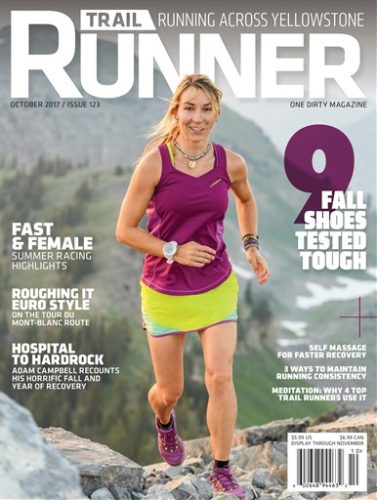
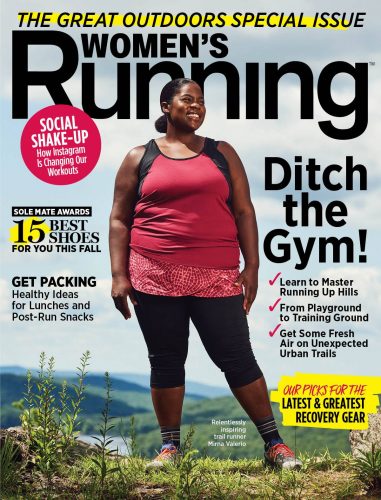
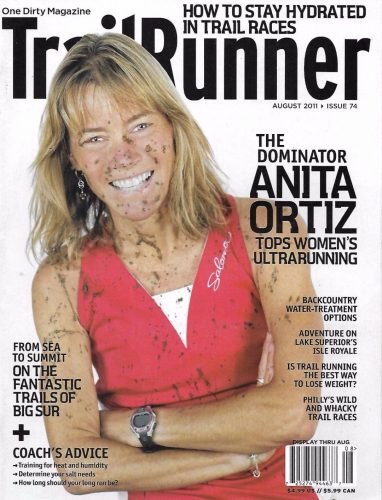
In terms of types of visibility, women want more promotion of your everyday sheros (vs. elite) who have all different types of backgrounds, stories and experiences, and who are also different shapes, colors, and sizes (inclusion!!!!!!). That doesn’t mean get rid of your elite athlete Q&A or human interest piece, but don’t forget that some women could care less about times or records, and more so about a relatable experience. And while we are on the topic of how to reach women, can we cut back on the usage of sex driven images? Unfortunately, media companies know they can always make $ with a sexy photo because someone out there needs to get their jollies by oogling a photo framed perfectly to catch the bounce of a woman running in a sports bra and tight shorts.
At the end of the day, if women don’t have visibility of other women like them participating in sports, we can expect a very slow and painful growth process.
Gear
Who wants to participate in a sport without appropriate gear?
Historically, it is more cost efficient for companies to work off of one model or one last (referring to shoes). To create new molds and casts for multiple sizes and shapes comes with a decent sized price tag. To dig a bit deeper, more new products with additional new sizes, also means more SKUs. In layman’s terms, brands must manufacture more goods, which means spending more money, all with the hope the goods will sell. When they manufacture and market goods as “unisex” their backend costs are lower because its all the same product and set-up. Thus less products, sizes and SKUs.
The argument of whether to make female specific vs. selling unisex is usually determined by the amount of females participating. If the numbers aren’t there, it isn’t cost effective to create new female specific products.
With the increasing interest and growth, more and more companies are beginning to create products from a women’s figure vs. the pink and shrink technique used from a man’s figure. Women are much more likely to purchase a product that is created for their anatomical build, and are more likely to be brand loyal because of the focus that brand is providing to generate a better running experience.
Women
Yes, women. We can be our own worst enemies. We are great at cutting each other down, and allowing our cattiness to get the best of us. When threatened we make sure others feel unwelcome, when jealous and insecure, we can find flaws in anyone just to boost our self-esteem. So why do we go straight for the jugular instead of working out our potential issues?
The suggested answer is rooted in our history, yet again. Decades ago, little girls were taught to look pretty and act lady-like from little on up. Their main mission would be to grow up and attract the best male suitor possible so that he could take care of her and to provide. As with any prize, there is always a competition to distinguish the winner. In this case, the competition was held amongst women.

You see, finding a husband was the key to security, the key to having a successful life. This was the same time frame when women were discouraged to pursue careers or education thus, they needed someone to look after them. Additionally, women not married were referred to as spinsters or ridiculed for their choice in being single, as there had to be something wrong with them for not wanting the societal definition of the “American Dream.”
Flash forward to the 60’s where it was a bit more accepting of women holding careers. In ‘63 the Equal Pay Act was passed, and in ’64 Title VII Civil Rights Act was passed. You’d think these rules would have created a more equal situation in the professional space, but discrimination and lack of opportunity was still endemic.
As a result, women learned to be competitive towards one another in hopes to get the one job position offered. You might say competition is good, needed in fact, and you’d be right, but there’s a difference between healthy and unhealthy competition.
Cattiness, flirtation, acting tough to be like the men, you name it. If getting a job had a large impact on a woman’s livelihood, she was going to fight for it, using any and all tactics.
It’s now 2018 and we are in a much better position with work place opportunities and pay, but we are far from equal. The same holds true within sports. Sponsored or elite women are still paid less than their male counterparts achieving the same standards.
How do we fix it? Well, we work together, not against each other. It seems like common sense, but when one’s livelihood is involved, it’s hard to make the choice to stand up and use your voice for change, verses taking the meager amount of money offered. This is another perfect example where the “dominos of doom” come into play. I’ll break it down:
-
- Sponsor offers Elite Female A $10k. Sponsor offers Elite Male $20k.
-
- Elite Female A is pissed. She wants equal pay since she is equally bad ass.
-
- Elite Female A is worried to negotiate for the following reasons:
-
- She’ll be embarrassed if the Sponsor says no.
-
- She may lose her offer to Elite Female B who is willing to accept the lower rate.
-
- Doesn’t want to accept offer and reconfirm women are willing to take less.
-
- Worried she’ll be black balled for voicing her thoughts and won’t find another sponsor.
- Elite Female A is worried to negotiate for the following reasons:
Unfortunately, women will struggle with participation growth and the ability to receive equal pay unless they can work together to create a better situation for the gender as a whole. We have the choice of empowering one another in an effort to make change, or we can continue to fight one another just to make small personal (and normally limited) gains.
Let’s face it, history hasn’t set women up for success in the realm of equality. And although we can’t change history, we can certainly control the future. If we truly want eliminate barriers and to create opportunities, we need to work together. We need to use our voices, and exude confidence. We need to harness the values of camaraderie and empowerment to change outdated mindsets, and to create solutions. We need to be a force, a movement, a community. When we work together, anything is possible.
*Call for Comments!
What other entry barriers do women face?
What are your thoughts on how history has shaped our current situation?
What are other ways we can tackle these issues?
Resources:
USNews.com
MarathonGuide.com
Time.com – Future Gender Norms
PlannedParenthood.com – What are Gender Roles and Stereotypes
Study.com – Gender Roles in the 1950s America
TheVisualCommunicationGuy.com – The Fear Appeal Advertising
JSTOR.org – Fear Appeals in Marketing
Apa.org – Fear Based Appeals
Khanacademy.org – Women in the 1950s
PBS.org – Mrs. America Womens Roles 1950
TheNewDaily.com – Womens Sport Visibility
Forbes.com – The Dark Side of Female Rivalry in the Workplace
PsychologyToday.com – Female Competition
MedicalNewsToday.com
About the Author

Gina has always been stubborn and bold, so when it came to advocating for women’s rights and equality in the outdoors, she was bound to make changes. As the founder of Trail Sisters, Gina’s goal is to grow participation and opportunity in women’s trail running. Gina is also Mayor Pro Tem for the town of Buena Vista, Colorado, an active member and former Training Director of Chaffee County Search & Rescue, and Race Director for the Lake Sonoma 50 Mile, Marathon, and Trail Sisters Half Marathon.
Share This Article!

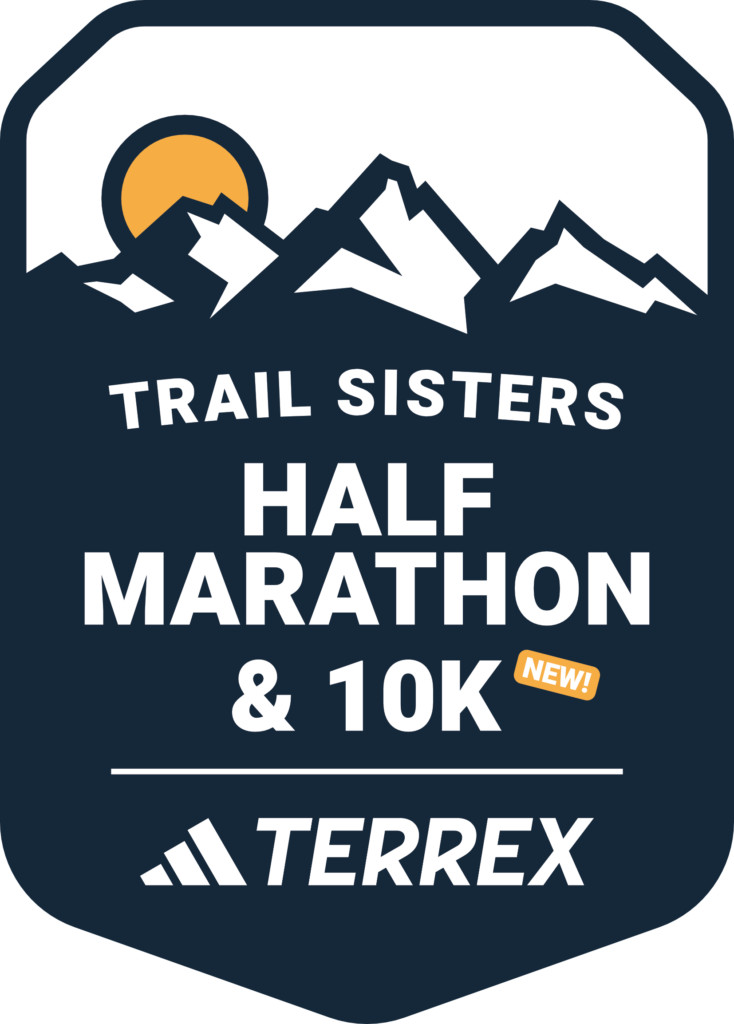
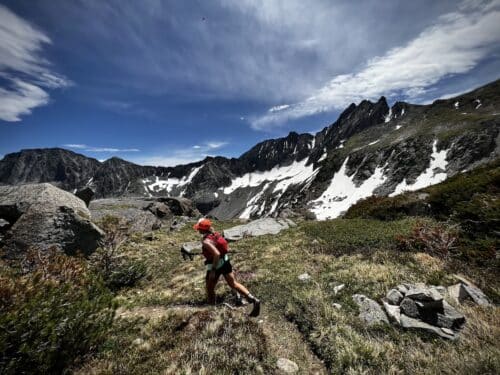
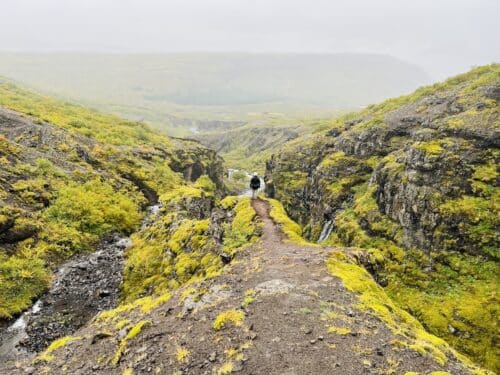

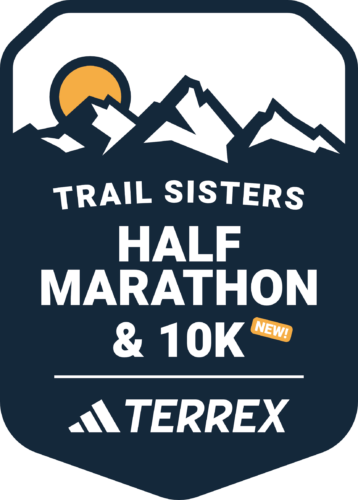
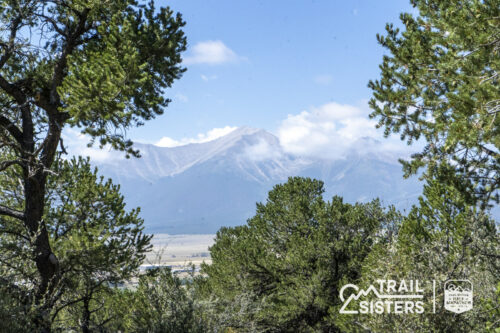
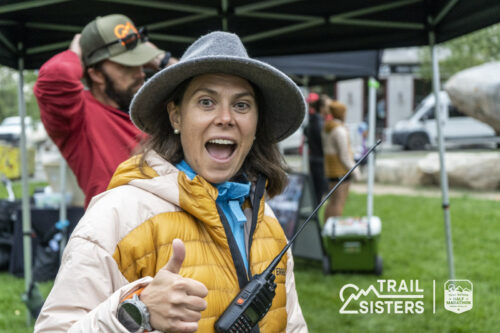
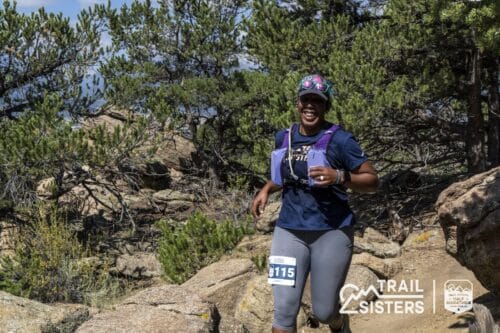
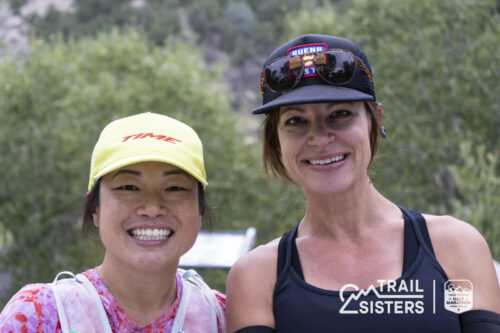
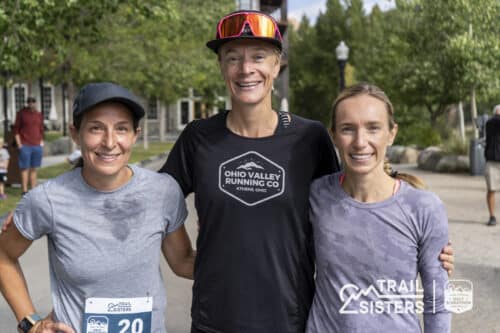
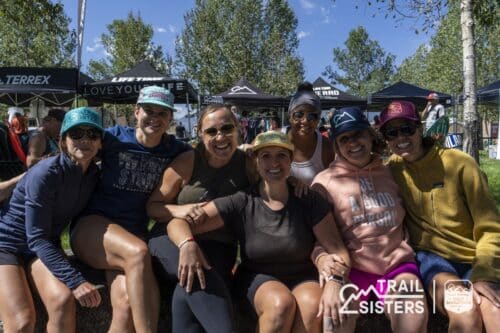
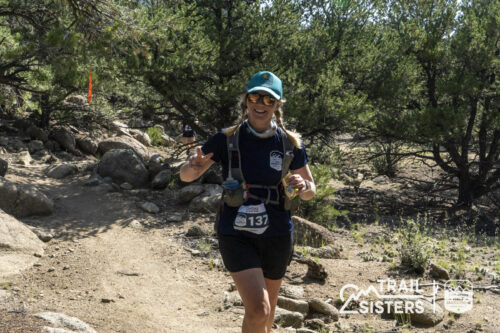
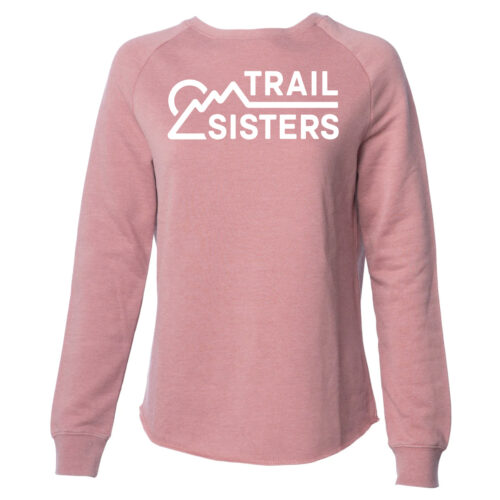
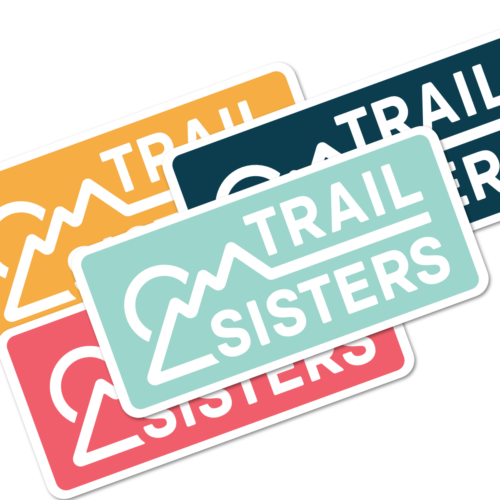
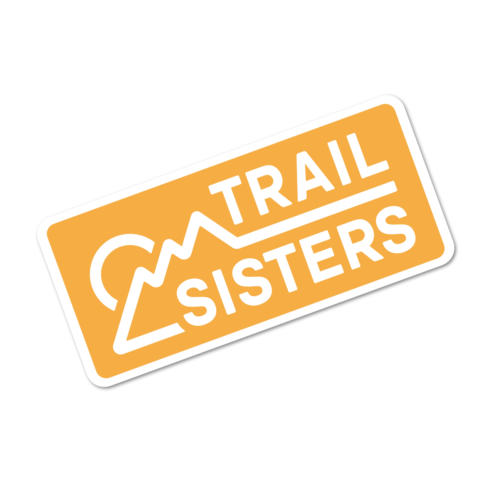
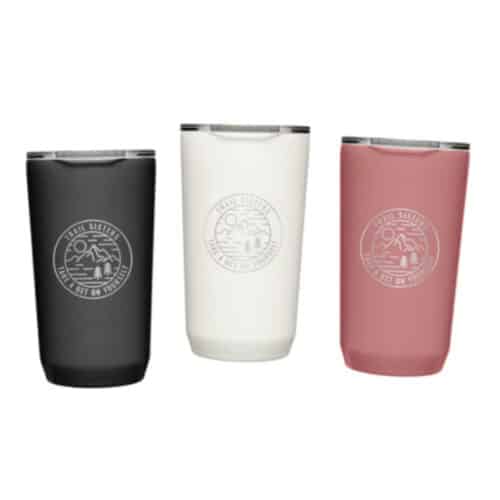
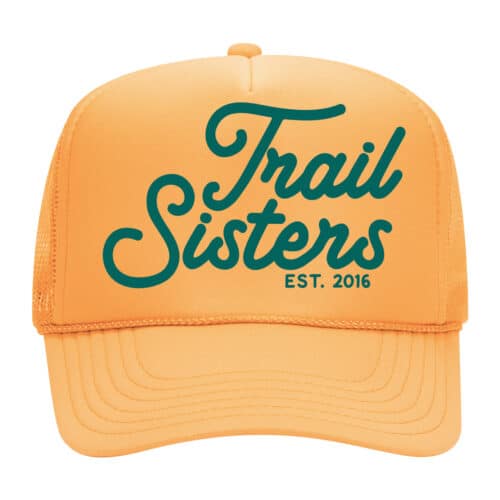
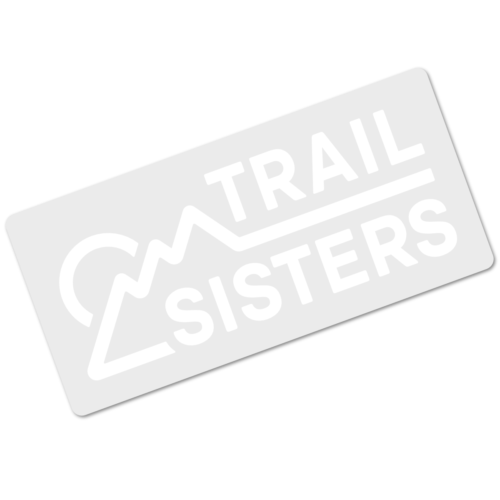

15 Responses
Here’s something turning 50 this year has started me thinking about. Call it a barrier to re-entry, or maybe a swift kick to the exit. I’m talking about tight time cutoffs, especially in longer races. After scanning the results of some mountainous 100s recently, I noticed how few women over 50 are among the finishers. Older women undoubtedly make up a smallish percentage of the starting field, too, but at some races you’ll find a higher percentage of women over 50 DNFing as opposed to finishing. The reason is frequently “missed a cutoff.” Cut-offs in and of themselves do not discriminate; they are gender and age-blind. I get that. But I would argue that tight cut-offs disproportionately affect women, older women in particular. I haven’t seen anyone talking about this, probably because it’s embarrassing. Who wants to admit that she is slowing down with age? It’s like a personal flaw, or evidence of lack of commitment. Age diminishes everyone’s speed, but because women are starting from a slower point than men to begin with, tight race cutoffs force us out of the game before men. I know there are exceptions! But we can’t all be Meghan Laws or Gunhild Swanson. Sometime in their mid-50s, or maybe their 60s if they are lucky and started running late in life, I suspect many women shift their focus to shorter ultras and timed events where cutoffs aren’t an issue. Of course, men have to make the same shift, but on average I suspect they are capable of participating in longer ultras, well, for longer than we are. What’s to be done? I don’t know, but I’d love to see more ultras offer early starts or relax their cutoff times. Getting more women in the door is awesome. Now let’s see if we can stay at the party a little longer.
Hey Jennifer!
Thanks so much for your comment and for reading! You bring up a GREAT point! It makes sense that as we age it’s tougher to reach those cutoff times…which also results in less people finishing the race, or even wanting to start. I wonder if earlier starts for select age groups would be the answer, it’s at least something to think about. I’m wondering what RDs would have to say about this…would love their thoughts! I’m thinking one issue might be finding staff to volunteer past a certain amount of time, or extra volunteer staff to take shifts. It could also cause some issues with permitting or additional services needed for the race….but since I’m not an RD, I’m not sure if those things are a big problem or not. At the very least, this is a great issue to talk about and see if there are any solutions for. Thanks for your note and support! – Gina
Thank you for bringing this up! This is a conversation I’ve been having with some of my Trail Sisters recently and would love more conversation around! Not just the in terms of access but just more conversation about aging in this sport! Would love to hear from women in their 50’s and 60’s who’ve been at it awhile. How has/is aging shifting things – both positive and the not-so-fun. I agree that I think women are embarrassed and that goes RIGHT back to Gina’s original post about societal norms. Why should we be embarrassed that we’re getting older?! I could go on, but that’s probably enough for now, haha. Thanks Gina for the GREAT article and Jennifer for deepening the conversation!
Nice write-up and synthesis of the adversity women runners face, putting it in historical context! It really is amazing when you look at the running timeline and appreciate how little time women have had to train at the marathon distance (for example) and how many decades of potential were lost because of such inequities. Thanks for your research and work into this article and your practical suggestions. I have recently become suspicious though of the generalization of the “catty female/women tearing each other down” trope. First, there is some new evidence that this is not actually true, or at the very least exaggerated (see studies cited within): https://www.nytimes.com/2016/06/23/opinion/sunday/sheryl-sandberg-on-the-myth-of-the-catty-woman.html We all have stories of the nasty girl or queen bee type, sabotaging us, or at least being rude and unsupportive; but at least in my n=1 experience, I could name you ten asshole men to every catty woman I’ve ever encountered! Women are just expected to be nicer and more agreeable and when they aren’t, we notice. Can’t help it, we’re socialized to notice. Finally, when women’s voices get louder, more complex, and platforms exist (like trailsisters) to publicly (gulp!) explore our thoughts/opinions/experiences it is only natural that women will disagree with each other, and perhaps even be critical of each other’s perspectives. After all, we know there is no one right way to be a feminist, or mother, or woman, or runner. If criticism isn’t communicated thoughtfully, it can be hurtful, and feel like “being torn down.” Heterogenous perspectives (such as the perspective of the 50+ racer in the previous comment), will make our demographic stronger, more empathetic, and hopefully more intersectional. This work is exhausting. Thank you for leading the charge and publishing your writing.
Hey Melanie!
Really great points! You are right that the catty attitude doesn’t exist everywhere, and also that some cattiness isn’t catty at all, it’s just a disagreement, etc. My article and research is definitely not an absolute guide to all of the problems/issues…but it hopefully gets thinkin in a way where we can better our situation. You mentioned that you’ve experienced a lot more crappy situations via men vs. women and I’d agree. Generally, a lot of the historical problems we have experienced were at the hands of men. Woman were not given opportunities or positions of power to have a say, etc. Thus…I didn’t add the barrier of “men” because they had a hand (one way or another) in many of the other barriers. That’s not to say that there are some amazing and support guys out there that want more for women than some women.
I also understand your point re: platform for conversation. Though we may end up disagreeing on how things are done, or what needs to be done, or other criticisms…I’d still take all that over women keeping quiet. If there’s one thing I’ve learned from history and my own experiences…it’s that the squeaky wheel gets the grease. I think there is a correct way to make those squeaks but silence keeps us in shadows and unnoticed. Thank you so much for your note and for reading! I really appreciate it!
Melanie and Gina, Great points. I think what Sandberg and Grant were offering as evidence are the facts of very successful women who are extremely good at motivating, mentoring and supporting other women. This trait of highly successful women seems to be growing all the time, and for that, I am stoked. However, the thought of women tearing one another down, or at least not supporting one another due to perceived or real competition, is not simply a myth. Gina gave a good synopsis of the history of this destructive behavior. And, unfortunately, it does still exist. It may well exist more among the adolescent, than the adult community. And it may be more common in some cultures, classes, and communities than others (properly addressing class and culture here is way beyond the scope of this response, or even a single article). But, regardless of when and where this behavior exists, I do not know a single woman who has not experienced it. I think women are, overall, becoming better supporters and mentors of other women, particularly in traditionally male arenas such as professional employment and sports. That said, if women cutting down other women is more common than men doing the same to other men, anywhere in our world, this behavior is one of the barriers Gina brings up. I am hoping, as Melanie suggests, and to a large extent I believe, women in our culture are improving with respect to our support of one another. Let’s keep talking, supporting, adventuring and making the world a bit more just.
Another issue with women not helping each other–the women who are at the top in management, but allow pay discrimination within their large private companies. There are women who have gotten to the top on the backs of other women, and then conveniently forget that aspect and allow gender and pay discrimination to occur within their company. The women who have reached the top echelon and have allowed this to happen should not be congratulated for their accomplishments, but rather should either enforce pay equity or be fired. Period.
One other comment I have–I was very lucky when I was one of few women in our fire department back in the 80s and 90s. I found rather than getting upset or being flirty, I just put my money where my mouth was, and proved I could perform equally as well (or sometimes better than) the men. I value the fact that my superior officers (both men and women) were excellent about encouraging women to move upward in our departments and did not allow gender discrimination.
Hi Beth!
Thanks so much for reading and for your comment! It is unfortunate when we don’t elevate each other when/where we can. Also, I LOVE hearing stories where men have treated us like equals and have empowered us. Thank you for sharing!
Hi everyone! Gina, lovin’ your style! I agree with the first comment posted here from Jennifer O’Conner about aging as a possible barrier. I am a master’s level runner at 55. Yet, I am faster, smarter, have more time, and am economically more stable than when I was in my 20s or 30s. I am also a late arriver at this party of trail running and have felt a bit isolated in my age group. When/if there is recognition for master’s level age group at trail races, I may well be in the top three. But that’s because there’s only 3 of us over 50 participating! I can’t and don’t want to compete against younger women (but I sure will cheer them on!). I want to compete against women my age. So, my WISH is 2 fold: more opportunities and recognition for female trail runners over 55. And, a FKT site for all runners over 55 for solo long-distance runs on established routes. Thanks again, Trail Sisters, for being the strong voice for women as we run these broken paths!
Hey Lisa!
Thanks a ton for reading and for your comment! I hear ya on getting more representation for the 55 and up age group! It’s awesome to watch what these women are accomplishing, and we should talk more about it so that other are aware of the possibilities and opportunities. I’m always happy to host stories, if you want to share one of your own! As for an FKT for runners 55 and older, it could be nice to have a division/category. Never hurts to reach out to folks at FastestKnownTime.com to see what they would be willing to do. Thanks again for reading and your support!
I enjoyed this article so much and it’s very timely as to where I am in life and ultramarathons. I am 54, began ultrarunning 20 years ago. My children are now grown, I have more time to train and travel. I have been perplexed by the low number of women my age running at events 50K-100M. There are usually only a handful of grand master runners at the races I am running. I thought perhaps this was due to menopause, health, longer recovery, etc. I hadn’t thought of the cutofffs and slowdown as we age as one of the reasons. It does make sense.
Fortunately, I haven’t come across many women who have been unsupportive of one another while running. I have come across many men runners who have been unsupportive (harassment/hurtful comments) towards woman runners, however. I don’t know how that can be changed other than calling them out on it as soon as it takes place, while on the run.
Thanks for republishing this one, Gina! And what a difference a year makes. I absolutely stand by my response of one year ago. Go, Gina and Melanie! And a big ol’ middle finger to the minority of individual female humans out there who are meanies and continue to bring other women down. That said, last year when I read this, I did not know I was a month away from an injury that would forever take fast running away from me, and still may take completion of ultas of any distance away (I’m ecstatic I achieved an 8-mile long run for the first time post-injury last week). Last year, I read the comments of Jennifer O’Conner and Tara, and thought, “good points. We should discuss this unnamed barrier to entry.” And then I went on to comment about aspects of Gina’s article which were within my scope of experience.
Now I read this with a visceral understanding of age (and age-related slow down which occurs with huge lifetime miles and accumulated injury as much as with chronological age) being a barrier that is in general, harder on women than it is on men. I do not see social injustice, misogyny or a history built to exclude women as a culprit here. Men have mechanical and hormonal advantages which, all else being equal, lead them to faster times than women. Cut-off times will generally prevent women from completing long races at a younger age than our male counterparts. This is one small, but important aspect of aging and/or slowing that I am increasingly motivated to explore.
I do not have answers to 1. how to make cut-offs fairer re: sex or 2. whether we should implement change here. I am not married to any value judgments regarding cut-off times. But I firmly believe this topic deserves a platform. It deserves discussion, study, debate, and stories of how individual runners are affected. What it does not need is vitriol. Several months ago an RD posted on FB, a desire to give women an early start time in part to make up for just this issue: cut off times disproportionately affecting women. I will grant that the language of the post lacked some tact as that RD, who I know to be a feminist and a guy, writes in a more funny than politically correct manner. He was immediately cut to pieces by respondents and even accused of “setting the women’s movement back decades.” Most of the responses were from people who have yet to experience the age/lifetime miles-associated slow down to the point of being unable to meet cut-offs. My point here is not that one RD made a tactical error in his effort to open discussion, or that people were cruel in their responses. My point is that someone tried to open this discussion and many chose snap judgments and emotion over kind, open dialog.
I do not know where we go from here on issues of sex, gender and age. But I do know that safe spaces for discussion are critical to progress. For that, Gina, I thank you and all my Trail Sisters. Women and men of all ages and backgrounds benefit from improvements in equity and justice.
I loved seeing this article pop up again and LOVED your comments, Nikki. I know the whole episode you are referring to, and it was such a shame. Sometimes it’s easier for people to jump to the pleasure of righteous indignation rather than stopping to think about an issue deeply and with compassion. I’m glad to see this conversation continuing. When I’ve brought up the idea of having more generous cutoffs – for everybody, not just women – citing the disproportionate effect tight cutoffs have on our gender, I’ve had women jump down my throat about not wanting special treatment. (Sigh.) I truly think that if we really want to increase women’s participation in the sport, this is an issue that needs to be addressed. I suspect, like anything, change will happen when there’s money to be made. I’d love to see an RD host a 100k or 100-mile race on an interesting (i.e., not super easy or multiple-loop) course and feature very generous cutoffs (which would benefit older guys as well as women; and newbies). Heck, I used to be an RD, maybe *I* should stop preaching and start acting. If you build it, and all that. 🙂
I had never though of Jennifer’s point before, but it makes a lot of sense. I will turn 60 in October and do find myself often in the “how long will I be able to/can I do this” mode. And the thought also creeping in of not registering for things out of fear I won’t make a cut off. For me, and thinking mainly of 100’s here, it’s not so much the overall time required to finish a 100, but the cut offs especially in the more mountainous/technical courses. Anyway “age” is definitely becoming a factor when I think about registering for a race.
atone for the Stories You Missed This Week with the Mercury Weekend Reading List
Whooo! you’re a BUSY BEE. appear to be, it’s completely understandable that since you’ve been SO busy, You may have missed many of the great reporting and stories the Mercury churned out this week! So while you are lounging about this weekend, Catch up on speedily you need by reading some of these A+++ Mercury articles! (PRO quick tip: If you not like being “much more to know, Then be major to know byMercury newsletters! All the latest stories shipped with the your email’s in box. next. your face.)
very Boy “incredibly small” Toese Jailed for August 22 decisions
A county judge dismissed a protester’s criminal charges this week because the had been all based on what he ruled to be a flawed curfew order from Wheeler.
Union Accuses City Managers of disturbing Strike Vote
A union that represent 1,200 city of Portland technicians has accused city managers of messing with a current strike vote.
COSMONAUT / GETTY pics
Film examination: Drive My Car should get All the Praise
The sublime and sublte “computer My Car, Directed with a masterful hand by Rysuke Hamaguchi, is one thing truly special.
have My Car DR
Most Officers Who Used Force During 2020 Protests Have Been Cleared By the [url=https://www.pinterest.com/asiame1/]asiame scam[/url] City of misconduct. here’s Why.
Information tucked into a new legal filing explains why the city’s department with regard to investigating police misconduct has found nothing wrong with the way cops treated protesters in 2020. Savage absolutely adore: Fast and flabergasted
Get yer motors working! it is “Fast mad” variation of Savage Love, As Dan Savage expeditiously answers a slew of thorny queries involving spanking, topping, Circumcision, The ethics of disloyal, and others.
the guy Newton
pay attention to in Portland: Two New Must See the latest viral video, A great Lineup at The Thesis, And an upcoming Federale Project
You have things to expect to be! Including an incredible show at The Thesis, Plus creations from Wynne and Esperanza Spalding (And a special guest aesthetics from Federale). Taps Acclaimed Bartender Jeffrey Morgenthaler for a New Line of Canned drinks
Acclaimed barkeep Jeffrey Morgenthaler was tapped by to generate a line of new canned cocktails, And effects are expectedly DELIGHTFUL. Federal Officials Order ODOT to Reevaluate environmentally friendly Impacts of Rose Quarter Freeway Project
Federal transportation officials ordered ODOT to reevaluate environmentally friendly impacts of the I 5 Rose Quarter project this week. Opponents of the freeway project believe the reassessment could pave the way for a more rigorous general study.